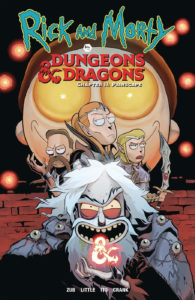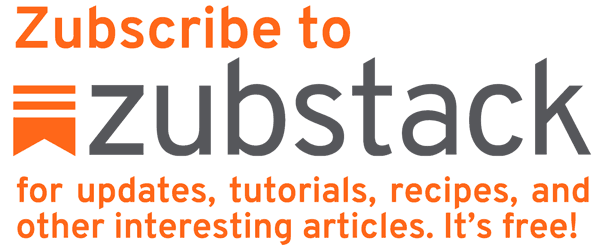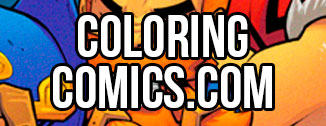A lot of people have asked me how I stay on top of my workload. I’m currently juggling a full-time day job (teaching and coordinating Seneca College’s Animation program), a part-time creative career job (project managing UDON creative services projects), other work (freelance comic writing) and writing/managing a creator-owned comic series (Skullkickers at Image).
When I write it all out like that it seems impossibly huge and ridiculous, it’s true. It can be easy for me to psyche myself out and let the amount of work in the queue overwhelm me, but I’ve been able to find some techniques that help keep it all in check.
Communication is everything.
Storytelling is all about communication. As creators we’re communicating ideas, characters, plot lines, emotions… The better we are at engaging and entertaining the audience, the stronger the response they’ll have to our work. People want to work with good communicators. Communication is at the very core of what we do. If you do it well you’ll have a serious leg up on the competition.
This may seem like an odd topic for a tutorial but, believe me, it’s just as important as anything else I’ve covered so far. The quality of your communication and how you’re perceived as a communicator has a direct correlation to how you’re treated as a professional.
In this article I’ll talk about organization, but in future tutorials I’ll also talk about the tone of communication, automating repetitive tasks and anticipating client needs to save time. Some of these things will seem pretty obvious, but all put together they save me a ton of time and keep projects rolling forward.
Email Habits
I’m obsessive about good email communication. My inbox rarely has more than 10 emails hanging around. I doubt I’ll ever be able to “zero” my inbox, but communication as a whole is under control and constant. Here’s how email works for me:
• I always reply. Even if that reply is a short and sweet “No” or a polite “I can’t do this right now but I’ll get back to it as soon as I can” type response, people always hear back from me. There’s no ambiguity or wondering if I received a message. It’s polite and the right thing to do.
I would ignore death threats or messages from crazy people but, thankfully, I haven’t had anything horrible like that so far in my career. Fingers crossed that I never do.
• If I receive a message I can respond to quickly now, I do it as soon as possible so emails don’t pile up. If it takes me less than a minute to respond to then there’s no reason for me to wait and do it later.
• If someone else can’t do their job until I reply, I prioritize that over anything else. I never want people to feel like they’re waiting on me unnecessarily.
• When I receive information or a file, even if the conversation is done, I hit the sender back with a short “Got it” or similar reply. I want people to know I’ve received their information and am good to go.
• Once an email is replied to, I either archive it (if it has information I’ll need later) or trash it immediately. Again, I don’t want messages to pile up. It’s a psychological way of pushing stuff that’s not relevant right now off my plate.
• I always title my emails with subjects that are short and clear. That way it’s easy to find if I need to search for that information later on. If someone sends me an email titled “Yo”, I reply with a subject that’s more relevant to what we’re talking about. According to Thunderbird, I sent over 5000 emails in 2012. I need to be able to find this stuff later on.
• In my emails I keep sentences clear and ensure that major points I’m trying to make are either bold or separate so that, even if someone quickly scans my message on their phone, they’ll see the important things I need them to. If I have questions, they are always separate or bullet pointed. Clarity is key.
• I always do my damnedest to follow through on my commitments but, if something is falling off schedule or not happening as planned, I communicate that as soon as possible. I’ve found that people are way more understanding if you confront a problem early than if you ignore it. It shows responsibility and saves a lot of headaches later on.
• The only emails that hang around in my inbox are ones where a conversation is active/relevant. My inbox isn’t just a mass of headlines stretching back into infinity; it’s a To-Do List reminding me of what I’m currently committed to. I can scan my inbox at any point and have a sense of my work schedule for the next few weeks.
When I hear people bragging that they have hundreds (sometimes thousands) of emails in their inbox, I’m not impressed. I worry that they’re overwhelmed and won’t be able to do their job properly.
Right now, for example, I have 8 emails in my inbox:
3 are reminding me about current writing deadlines
2 are reminding me about artwork I committed to completing next month
1 is a podcast interview date happening this week
1 is a book launch event I committed to that’s coming up
1 is the latest email in an ongoing conversation I’m having with an artist about a potential new creator-owned project
That’s what I need to keep in mind right now so those emails stay up front. The rest gets archived in folders clearly labeled by project name. Once a project is finished I shove the whole folder into a deeper Archive folder so it’s out of the way. It’s sort of like RAM versus hard drive space. The relevant NOW stuff is in my inbox and instantly accessible. The other important stuff is filed away for later access if needed.
New Project Organization
When a conversation starts up about a new potential project I immediately gather all the relevant info into a new project folder. In there I put reference material, links, contracts and usually a few text files with hastily jotted down notes I made while on the phone with clients so I can refer to them later. I can’t assume that I’ll remember details later and I don’t assume anyone else has the information I need. I keep as much material ‘local’ as possible so I’m up to date and organized in a way that makes sense for me.
When new deadlines or commitments pop up, they instantly go into my Google Calendar so I can see availability and plan my time. My wife and I share Google Calendar information so we can see how our weeks are filling up and plan downtime too. I know that sounds ridiculous, but with a work schedule filled to the brim it’s a necessity.
All the above sounds anal and, sure, it absolutely is. It’s a methodical process that keeps a lot of different projects moving forward on a constant basis. It’s detail-oriented and streamlined because I can’t afford to let things fall through the cracks and don’t want to waste time anymore. I have to be proactive and organized because otherwise none of this would work.
If I’m doing it right, my communication should showcase hard-work, organization and reliability. Those are traits I’m happy to take ownership of.
If you find my tutorial blog posts helpful, feel free to let me know here (or on Twitter), share them with your friends and consider buying some of my comics to show your support.





 Zub on Amazon
Zub on Amazon Zub on Instagram
Zub on Instagram Zub on Twitter
Zub on Twitter
Very helpful, Jim! Thank you for putting this out there. Its much appreciated!
Never leave a client wondering what happens next.
If you owe them something, tell them when you’ll get it to them. If you deliver something and need feedback, ask and give a deadline.
Very concise! Great ways to improve organization and efficiency. Thumbs up 😀
Good to know I do it similarly. Thanx for this, gonna send it to some of my friends, so that they can improve. Good luck with Skullkickers and co.!
How do you add the signature from google drive?
In your mail program there should be a spot where you can pick a text file to use for the signature on your email.
In Thunderbird (which is what I use) it’s under Account Settings. You can check the box marked ‘attach a signature’ and then point to the file.